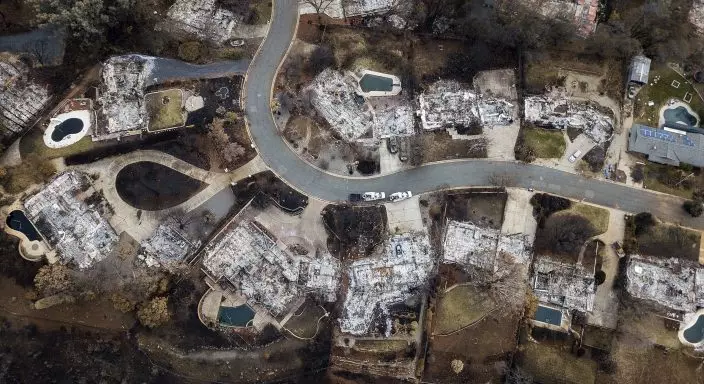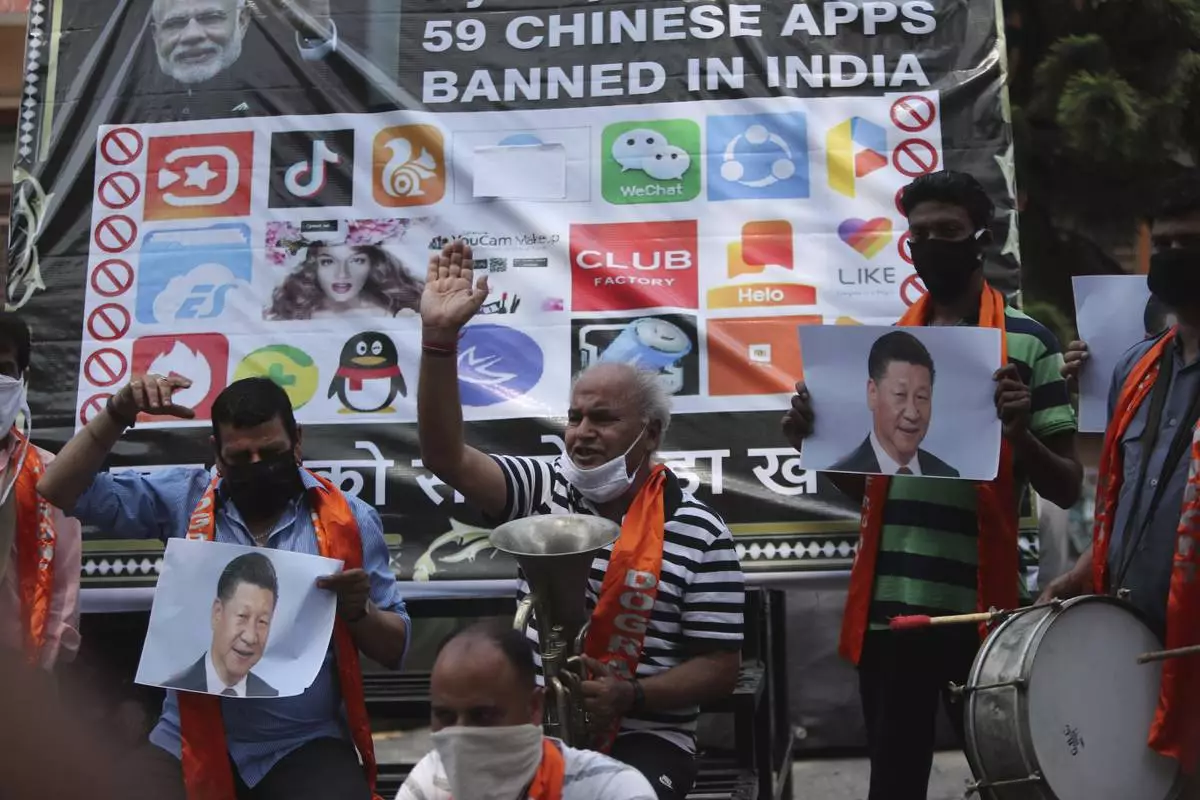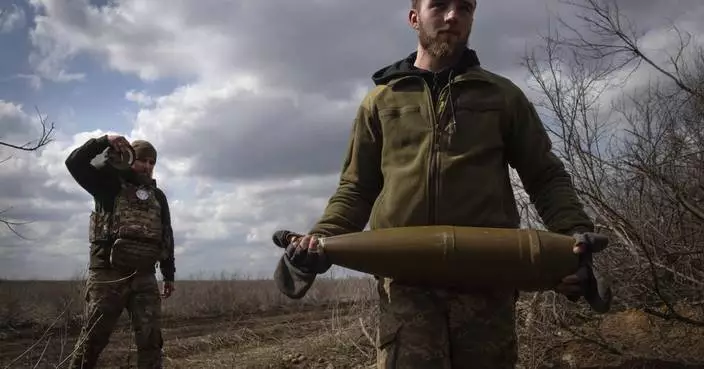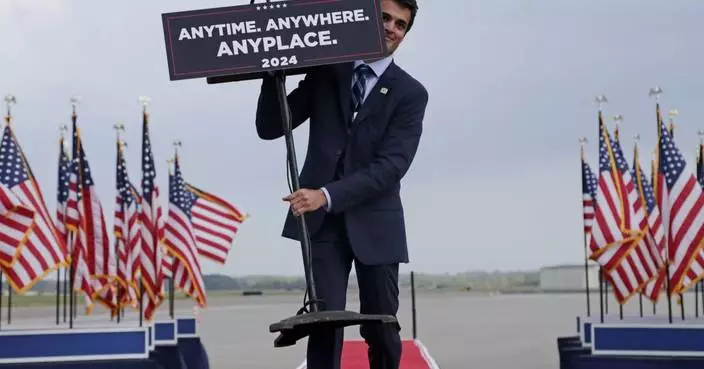The drinking water in Paradise, California, where 85 people died last year in the nation's worst wildfire in a century, is contaminated with the cancer-causing chemical benzene, officials said.
Officials said they believe the contamination happened after the November firestorm created a toxic combination of gases in burning homes that got sucked into the water pipes as residents and firefighters drew water heavily, the Sacramento Bee newspaper reported Thursday.
Officials say that may explain why benzene, which has been linked to anemia and leukemia, has been found in tests at various spots rather than from one source in Paradise, which was largely destroyed.

FILE - In this Dec. 3, 2018, file photo, homes leveled by the Camp Fire line Valley Ridge Drive in Paradise, Calif. Water officials say the drinking water in Paradise, which was decimated by a wildfire last year, is contaminated with the cancer-causing chemical benzene. Fixing the problem could cost $300 million and take up to two years. The Sacramento Bee reports Thursday, April 18, 2019, experts believe the extreme heat of the November firestorm created a "toxic cocktail" of gases in burning homes that was sucked into water pipes when the system depressurized. (AP PhotoNoah Berger, File)
The chemical occurs naturally in fire; is part of crude oil, gasoline and cigarette smoke; and is used to make plastics, synthetic fibers and other products, according to the federal Centers for Disease Control.
Melted plastic meters and plastic pipes also may have sent benzene into the system, water officials say.
Paradise Irrigation District officials say they have taken about 500 water samples around town, and they have found benzene 30 percent of the time.
"It is jaw-dropping," said Dan Newton of the state Water Resources Control Board. "This is such a huge scale. None of us were prepared for this."
Those who have assessed the problem say the water district may be able to clean pipes to some homes later this year, but it will take two years and up to $300 million before all hillside residents can safely drink, cook or bathe in the water.
About 1,500 of the town's 27,000 residents are living in the few surviving houses. Water officials have warned them not to drink, cook, bathe or brush their teeth with tap water and to only take quick showers with warm water. Those residents are living on bottled water deliver daily and water tank deliveries.
Norman Stein, 84, drives 15 minutes each week to the water distribution center, loads his trunk with bottles and stacks them in his garage.
He and his wife, Darlene, disagree on the risk posed by their tap water in Paradise. She opened the sink tap to show how clear the water is.
"I could feel an oily substance before. But it's cleared up now," she said. "This is good water."
"Only it's got benzene in it," her husband retorted. "I won't even brush my teeth in that stuff."
Stein is thinking about buying a purifying system, which some of his friends have done. But water officials have said that they don't know how well in-home filters protect residents if there is benzene in their taps.
Water experts said what happened in Paradise has been detected only once before — during a deadly fire in Santa Rosa last year. They say California must work to ensure the water is safe in Paradise and learn what could protect drinking water in future wildfires.
"This is really just the beginning here," said Jackson Webster, a Chico State University professor and environmental engineer specializing in the effects of wildfire on water quality. "The fires in Santa Rosa caught people by surprise. Now, it has happened twice. The bells are ringing."
Information from: The Sacramento Bee, http://www.sacbee.com
NEW DELHI (AP) — The hugely popular Chinese app TikTok may be forced out of the U.S., where a measure to outlaw the video-sharing app has won congressional approval and is on its way to President Biden for his signature.
In India, the app was banned nearly four years ago. Here's what happened:
In June 2020, TikTok users in India bid goodbye to the app, which is operated by Chinese internet firm ByteDance. New Delhi had suddenly banned the popular app, alongside dozens other Chinese apps, following a military clash along the India-China border. Twenty Indian and four Chinese soldiers were killed, and ties between the two Asian giants plunged to a new low.
The government cited privacy concerns and said that Chinese apps pose a threat to India’s sovereignty and security.
The move mostly drew widespread support in India, where protesters had been calling for a boycott of Chinese goods since the deadly confrontation in the remote Karakoram mountain border region.
“There was a clamour leading up to this, and the popular narrative was how can we allow Chinese companies to do business in India when we’re in the middle of a military standoff,” said Nikhil Pahwa, a digital policy expert and founder of tech website MediaNama.
Just months before the ban, India had also restricted investment from Chinese companies, Pahwa added. “TikTok wasn’t a one-off case. Today, India has banned over 500 Chinese apps to date.”
At the time, India had about 200 million TikTok users, the most outside of China. And the company also employed thousands of Indians.
TikTok users and content creators, however, needed a place to go — and the ban provided a multi-billion dollar opportunity to snatch up a big market. Within months, Google rolled out YouTube Shorts and Instagram pushed out its Reels feature. Both mimicked the short-form video creation that TikTok had excelled at.
“And they ended up capturing most of the market that TikTok had vacated,” said Pahwa.
In India, TikTok content was hyperlocal, which made it quite unique. It opened a window into the lives of small-town India, with videos coming from tier 2 and 3 cities that showed people doing tricks while laying down bricks, for example.
But for the most part, content creators and users in the four years since the ban have moved on to other platforms.
Winnie Sangma misses posting videos on TikTok and earning a bit of money. But after the ban, he migrated to Instagram and now has 15,000 followers. The process, for the most part, has been relatively painless.
“I have built up followers on Instagram too, and I am making money from it, but the experience isn’t like how it used to be on TikTok,” he said.
Rajib Dutta, a frequent scroller on TikTok, also switched to Instagram after the ban. “It wasn’t really a big deal,” he said.
The legislation to outlaw the app has won congressional approval and now awaits a signature from Biden.
The measure gives ByteDance, the app’s parent company, nine months to sell it, and three more if a sale is underway. If this doesn’t happen, TikTok will be banned. It would take at least a year before a ban goes into effect, but with likely court challenges, it could stretch longer.
In India, the ban in 2020 was swift. TikTok and other companies were given time to respond to questions on privacy and security, and by January 2021, it became a permanent ban.
But the situation in the U.S. is different, said Pahwa. “In India, TikTok decided not to go to court, but the U.S. is a bigger revenue market for them. Also, the First Amendment in America is fairly strong, so it’s not going to be as easy for the U.S. to do this as it was for India,” he said, in reference to free speech rights in the U.S. Constitution.
As Chinese apps proliferate across the world, Pahwa says countries need to assess their dependency on China and develop a way to reduce it as the apps can pose a national security risk.
The app is also banned in Pakistan, Nepal and Afghanistan and restricted in many countries in Europe.
“Chinese intelligence law and its cybersecurity law can allow Chinese apps to work in the interest of their own security. That creates a situation of distrust and it becomes a national security risk for others,” said Pahwa.
“There should be different rules for democratic countries and for authoritarian regimes where companies can act as an extension of the state,” he added.
—-
This story corrects the expert's erroneous reference to Fourth instead of First Amendment.

FILE- Activists of Jammu and Kashmir Dogra Front shout slogans against Chinese President Xi Jinping next to a banner showing the logos of TikTok and other Chinese apps banned in India during a protest in Jammu, India, July 1, 2020. (AP Photo/Channi Anand, File)











